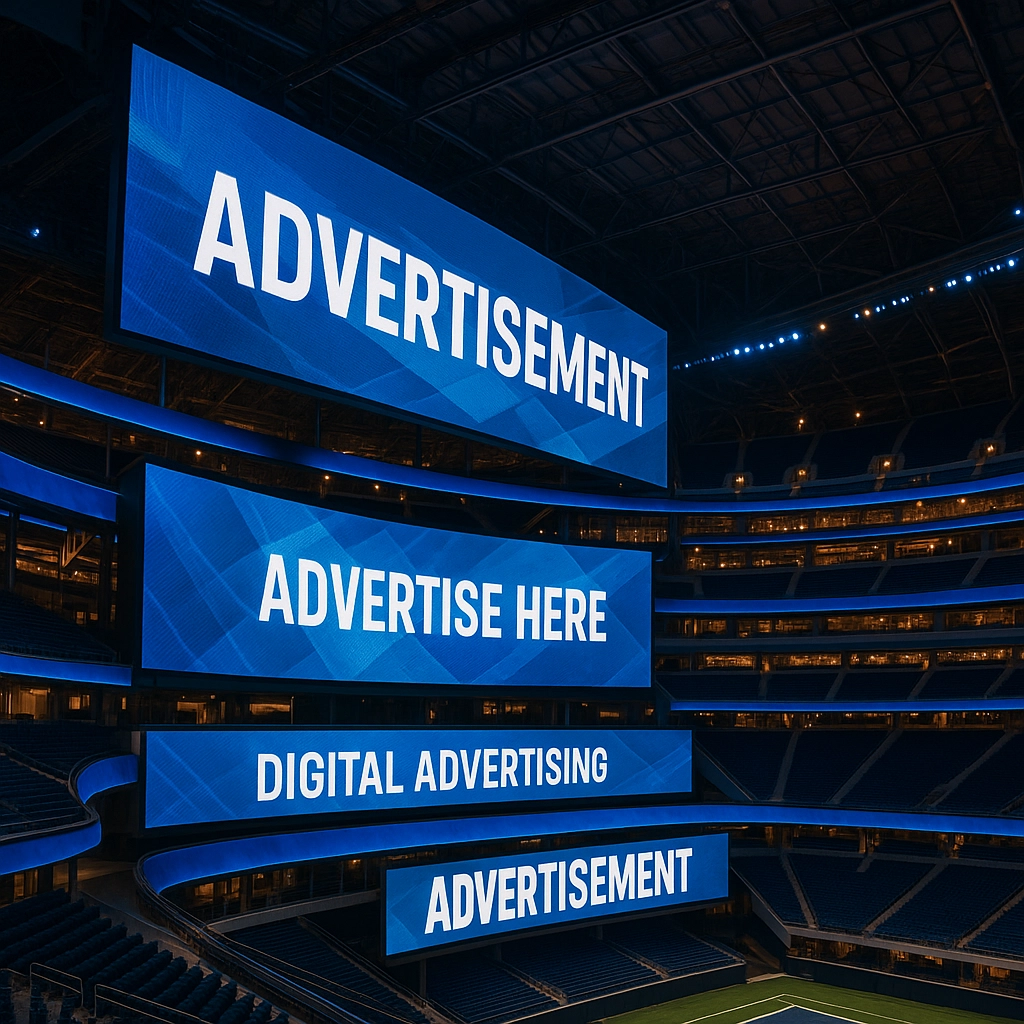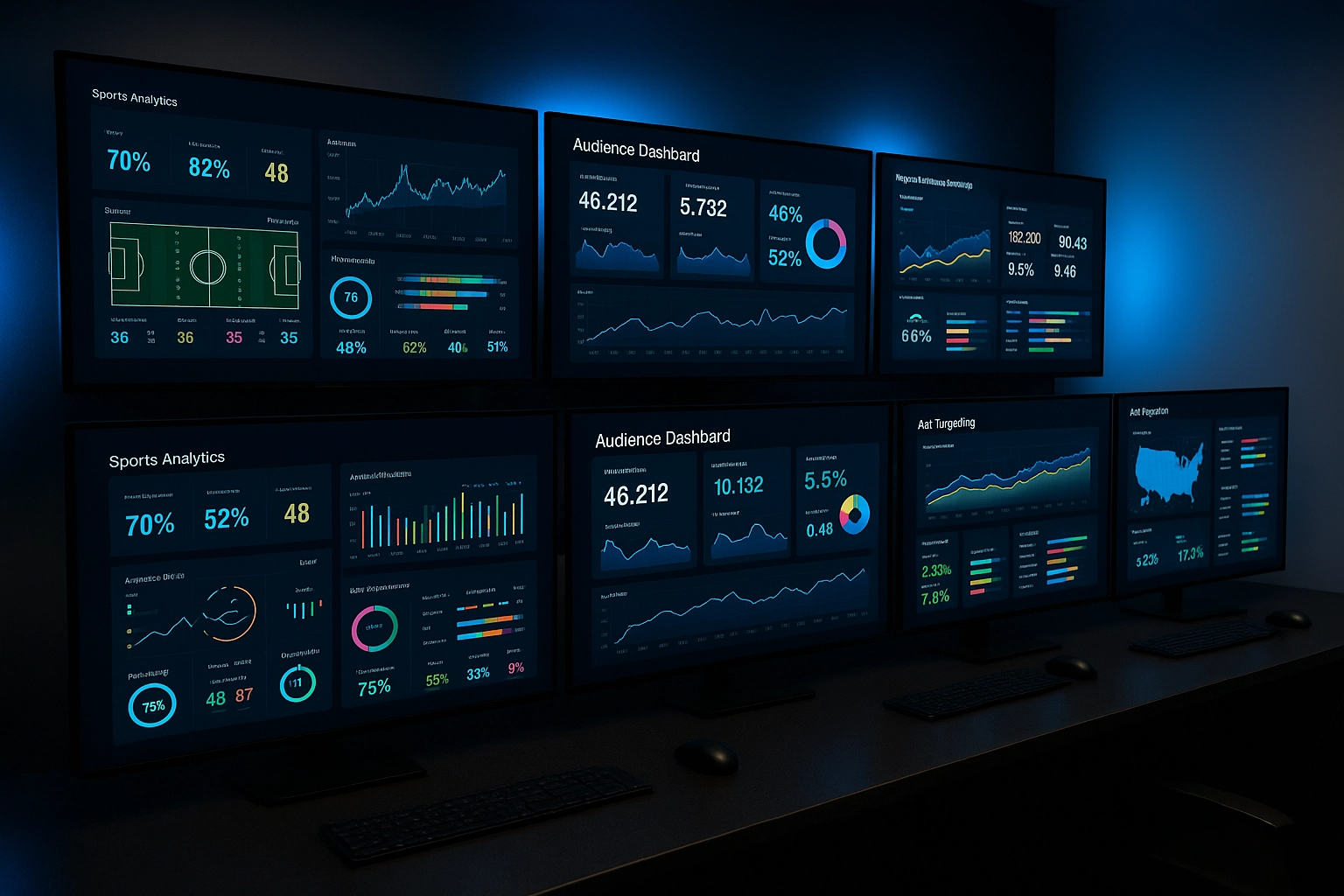Traditional stadium sponsorships face a critical transformation rather than extinction, as digital screens and advanced technologies reshape the sports marketing landscape. The emergence of over 25,000 digital displays across global sports venues signals a fundamental shift from static advertising to dynamic, data-driven fan engagement strategies.
The Digital Infrastructure Revolution
Stadium sponsorships have evolved beyond simple logo placements and static signage. Modern sports venues integrate sophisticated digital display networks that enable real-time content updates, personalized messaging, and interactive fan experiences. This technological advancement transforms traditional sponsorship assets into dynamic marketing platforms capable of delivering targeted content based on audience demographics, game situations, and fan behavior patterns.
Over 300 global sports stadiums began renovations or new construction projects in 2025, with nearly 50% of these initiatives concentrated across North America and Europe. These infrastructure investments prioritize digital integration, creating foundations for advanced display systems, enhanced connectivity, and interactive technologies that support next-generation sponsorship activations.

Strategic Evolution in Sponsorship Valuation
Logo-focused placements maintain prominence in sponsorship strategies, with jersey patches, digital overlays, and LED signage dominating brand visibility objectives. These elements provide consistent exposure across multiple touchpoints, delivering measurable value through television broadcasts, social media content, and digital platform distribution.
Digital overlays represent a strategic advancement in traditional stadium advertising, enabling brands to maintain visibility across various broadcast formats while adapting content for different audience segments. This technology allows sponsors to optimize messaging based on viewing platform, geographic location, and demographic targeting parameters.
The integration of programmatic digital out-of-home (DOOH) capabilities enhances sponsorship effectiveness through automated bidding, real-time optimization, and performance measurement. Brands leverage these systems to adjust campaigns based on live game data, weather conditions, and audience engagement metrics.
Mobile Technology Integration
Mobile technology fundamentally alters sports sponsorship dynamics by transforming passive viewing experiences into interactive, always-connected engagement opportunities. Fans utilize mobile devices as second screens during live broadcasts, creating touchpoints for personalized sponsor content delivery beyond traditional stadium boundaries.
Augmented Reality (AR) experiences demonstrate sophisticated sponsorship integration within stadium environments and remote viewing contexts. Luxury brands partner with sports organizations to create AR-powered activations, such as interactive virtual products, immersive brand experiences, and gamified fan engagement programs that extend traditional sponsorship reach.
Location-based mobile targeting enables sponsors to deliver contextual messaging to fans within stadium proximity, creating opportunities for pre-game, halftime, and post-game engagement through push notifications, social media integration, and exclusive content access.

Data-Driven Audience Targeting
Digital screens enable precise audience segmentation and targeted messaging delivery based on comprehensive fan data analytics. Sports properties leverage demographic information, purchasing behavior, and engagement history to customize sponsor content for specific audience segments within stadium environments.
Real-time analytics provide sponsors with immediate feedback on campaign performance, enabling rapid optimization of creative content, messaging strategy, and placement allocation. These systems track engagement metrics, conversion rates, and brand awareness indicators to quantify sponsorship return on investment.
The integration of device ID targeting allows brands to extend stadium-based campaigns to mobile and digital platforms, creating omnichannel experiences that maintain engagement beyond live event attendance. This capability enables sponsors to retarget stadium attendees with personalized content across multiple touchpoints.
Purpose-Driven Partnership Evolution
Modern sponsorship strategies reflect shifting brand priorities toward purpose-driven partnerships that emphasize social responsibility, sustainability initiatives, and community engagement. Sports organizations demonstrate clear Corporate Social Responsibility (CSR) and Environmental, Social, and Governance (ESG) values to secure funding from brands seeking authentic alignment with fan values.
Consumer activism influences sponsorship decisions as fans increasingly evaluate sponsor authenticity and brand values alignment. This dynamic creates opportunities for brands that demonstrate genuine commitment to causes relevant to sports audiences while presenting challenges for organizations perceived as misaligned with fan expectations.
The emergence of smaller sports properties and niche leagues creates targeted sponsorship opportunities for brands seeking specific audience engagement. Properties including women’s professional sports, emerging competitive formats, and technology-driven events attract sponsors pursuing highly engaged, demographic-specific audiences.

Technology Partnership Ecosystem
Sports marketing transformation relies on strategic partnerships with technology providers specializing in digital display management, programmatic advertising, and fan engagement platforms. These collaborations enable sports properties to deliver sophisticated sponsor experiences while providing measurement capabilities that justify sponsorship investments.
Programmatic DOOH platforms automate sponsor content delivery, optimize placement allocation, and provide real-time performance analytics. Leading demand-side platforms (DSPs) facilitate sponsor access to digital inventory across multiple sports venues while ensuring brand safety and contextual relevance.
Integration with social media platforms amplifies traditional sponsorship assets through digital content sharing, user-generated content campaigns, and influencer partnership programs. This connectivity extends sponsor reach beyond physical stadium boundaries to global digital audiences.
Performance Measurement Standards
Digital transformation enables comprehensive sponsorship performance measurement through advanced attribution modeling, brand lift studies, and engagement analytics. Sponsors access detailed metrics including impression delivery, audience engagement duration, and conversion tracking across multiple touchpoints.
Brand preference studies quantify sponsorship impact on consumer attitudes, purchase consideration, and brand awareness metrics. These measurements provide objective evidence of campaign effectiveness, supporting sponsorship renewal decisions and budget allocation optimization.
The implementation of unified measurement frameworks across traditional and digital sponsorship assets enables comprehensive ROI analysis. Sponsors evaluate performance across television exposure, digital engagement, social media amplification, and direct response metrics to optimize investment allocation.
Future Integration Opportunities
Successful sports marketing strategies integrate traditional sponsorship elements with digital technologies to create comprehensive fan experiences that deliver measurable brand value. Rather than replacing conventional stadium advertising, digital screens and mobile platforms amplify existing sponsorship assets while providing enhanced targeting capabilities.
Artificial intelligence applications enable predictive audience targeting, automated content optimization, and personalized fan experience delivery. These technologies support sponsor objectives by identifying optimal engagement timing, content formats, and placement strategies based on historical performance data.
The convergence of physical and digital experiences creates hybrid sponsorship opportunities that combine in-venue activation with remote audience engagement. Brands leverage this integration to extend campaign reach while maintaining authentic connections with sports audiences across multiple touchpoints.
Dan Kost, CEO of OOH Sports, emphasizes the strategic importance of this transformation: “The evolution from traditional to digital sponsorship represents an opportunity for brands to create deeper, more meaningful connections with sports audiences through data-driven, personalized experiences.”
Traditional stadium sponsorships continue evolving rather than disappearing, enhanced by digital technologies that provide unprecedented targeting capabilities, measurement accuracy, and fan engagement opportunities. The successful integration of conventional sponsorship assets with advanced digital platforms creates comprehensive marketing strategies that deliver quantifiable value for brands while enhancing fan experiences across multiple touchpoints.
Ready to transform your sports marketing strategy with programmatic DOOH? Contact OOH Sports at +1 (970) 703-0102 to discover how digital screens can amplify your sponsorship investments and deliver measurable results.
Share this article:
Tags: #Motivation #Branding #Strategy #Marketing #AdvertisingAndMarketing #digitalmarketing #Innovation #Sports

